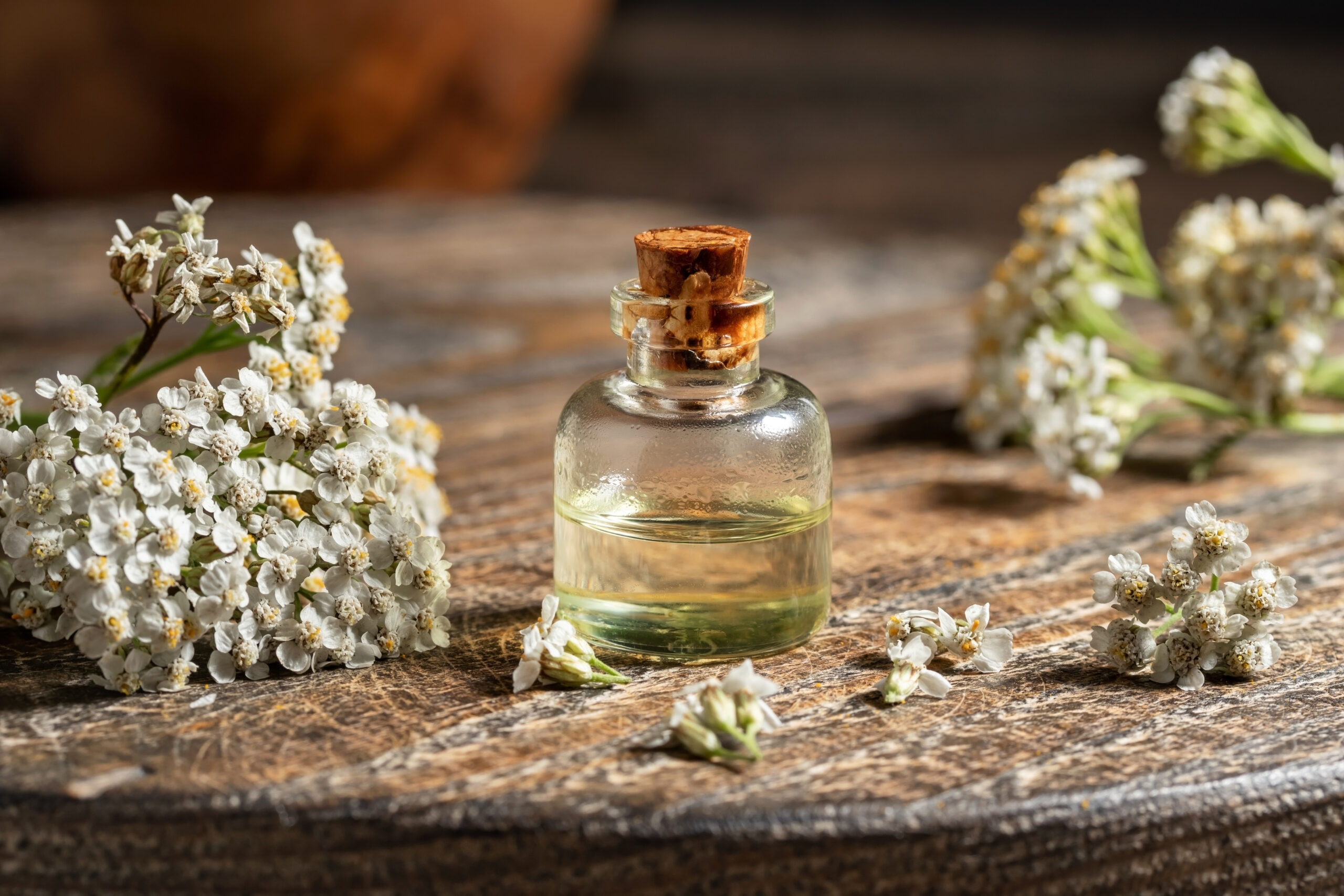You knicked your finger with a kitchen knife… ouch! What is the first thing you do? Most likely, you reach for a bandage to cover the wound. Did you know that one medicinal plant has earned the nickname “Nature’s Bandage” for its remarkable ability to stop bleeding instantly? Before the invention of bandages, this plant was a go-to remedy for minor wounds.
Meet Yarrow (Achillea millefolium). This member of the Asteraceae family is one of the earliest known medicinal plants used by humans. With a long history in herbal medicine, it remains highly valued for its diverse healing properties.
A Historical Healer
Yarrow’s healing properties have been recognized for thousands of years. Its botanical name, Achillea millefolium, originates from the Greek hero Achilles, who was said to have used yarrow to treat wounded soldiers on the battlefield. Native American tribes, traditional Chinese medicine practitioners, and herbalists across Europe have all documented its use in stopping bleeding, disinfecting wounds, and accelerating the healing process.
How Does Yarrow Work?
Yarrow contains tannins, which help constrict blood vessels, reducing bleeding when applied to a wound. It has anti-inflammatory, antiseptic, and analgesic properties, making it an excellent natural remedy for minor cuts, scrapes, and nosebleeds. The plant also contains flavonoids and alkaloids, which promote clotting and tissue regeneration.
How to Use Yarrow for Bleeding Wounds
One of the best things about yarrow is that it can be used in several ways, depending on what’s available:
- Fresh Leaves and Flowers – Cush fresh leaves and apply them directly to a wound to help stop bleeding quickly.
- Dried Yarrow Powder –Ground dried yarrow leaves and flowers into a powder and sprinkled onto cuts or wounds to promote clotting.
- Yarrow Tincture – Applhya yarrow tincture to wounds.
- Yarrow Infused Oil or Salve – Herbal-infused yarrow oil or salve is a soothing and healing treatment for burns, bruises, and skin irritations.
Identifying and Growing Yarrow
Yarrow has feathery, fern-like leaves and small, white, or pale pink flower clusters. Growing yarrow in your garden is simple, as it thrives in full sun and well-drained soil and is considered a “no fuss” plant. It is drought-tolerant and can be propagated easily from seeds or cuttings.
Additional Health Benefits of Yarrow
Beyond its ability to stop bleeding, yarrow offers a range of other medicinal benefits:
- Digestive Aid – Yarrow tea has been used to soothe digestive issues, reduce bloating, and relieve cramps.
- Menstrual Support – Yarrow is known to help regulate menstrual cycles and reduce excessive bleeding.
- Immune Booster – With its antibacterial and antiviral properties, yarrow can help support the immune system, making it a great addition to herbal cold and flu remedies.
- Skin Healing – Used in salves and creams, yarrow helps treat rashes, insect bites, and burns.
Precautions and Considerations
While yarrow is generally safe for most people, some individuals may have an allergic reaction, mainly if they are sensitive to plants in the Asteraceae family (such as daisies or chamomile). Pregnant women should avoid consuming yarrow, as it may stimulate contractions. Always consult a healthcare professional before using herbal remedies, especially if you are on medication.
Don’t Overlook Nature’s First Aid Kit
Yarrow has rightly earned its reputation as Nature’s Bandage due to its incredible ability to stop bleeding instantly and promote wound healing. Whether you’re an herbal enthusiast, a survivalist, or simply someone who appreciates the power of nature’s remedies, keeping yarrow on hand- whether fresh, dried, or in tincture form, can be an invaluable addition to your natural first aid kit. The next time you get a minor cut or scrape, consider reaching for yarrow, the healing plant that has stood the test of time.




